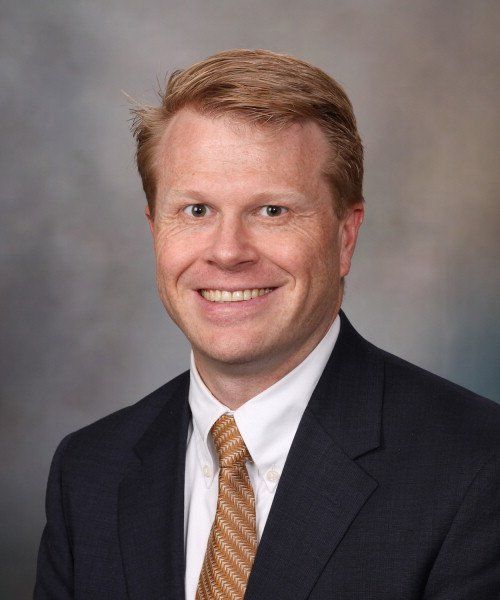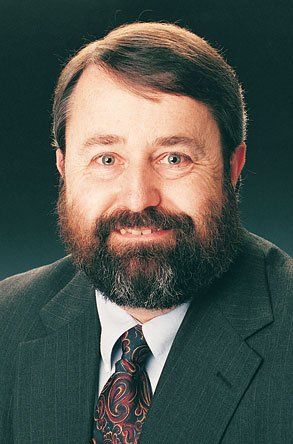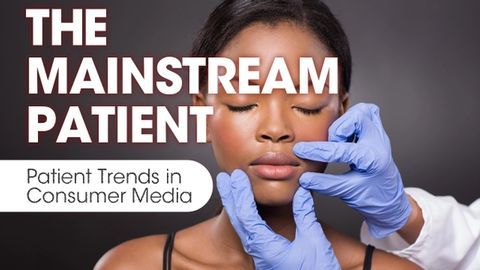- Case-Based Roundtable
- General Dermatology
- Eczema
- Chronic Hand Eczema
- Alopecia
- Aesthetics
- Vitiligo
- COVID-19
- Actinic Keratosis
- Precision Medicine and Biologics
- Rare Disease
- Wound Care
- Rosacea
- Psoriasis
- Psoriatic Arthritis
- Atopic Dermatitis
- Melasma
- NP and PA
- Skin Cancer
- Hidradenitis Suppurativa
- Drug Watch
- Pigmentary Disorders
- Acne
- Pediatric Dermatology
- Practice Management
- Prurigo Nodularis
- Buy-and-Bill
Article
Why burnout is increasing among U.S. dermatologists
Dermatologists have enjoyed being ranked last or near last among medical specialties when it comes to burnout. But a new study tells a different story. Learn the factors and what derms are doing to combat burnout.
Dermatologists have enjoyed being ranked last or near last among medical specialties when it comes to burnout. But a new study by Mayo Clinic and American Medical Association researchers suggests dermatologists, like their peers in other specialties, might be fast succumbing to the tell-tale symptoms of professional burnout: emotional exhaustion, loss of meaning in their work and feelings of ineffectiveness.1
RECOMMENDED: When physicians struggle with mental health

Shanafelt, M.D., a hematologist at Mayo Clinic, Rochester, Minn.That’s not good for physicians, their families, the medical profession or patients, according to the study’s first author Tait Shanafelt, M.D., a hematologist at Mayo Clinic, Rochester, Minn.
Dr. Shanafelt and colleagues published an update from a three-year study evaluating burnout and work-life balance among U.S. physicians. They found more than half of U.S. physicians are professionally burned out - up 10% over the last three years. This is according to their comparison of data from 2014 to information collected in 2011. The survey results were based on 6,880 U.S. physicians, a 19% response rate, as well as a population-based sample of 5,313 working U.S. adults in other fields.
The study’s results were particularly notable in dermatology, according to Dr. Shanafelt.
“At the time of our 2011 study, dermatologists had one of the lowest rates of burnout and among highest rates of professional satisfaction of all specialties evaluated. Between 2011 and 2014, dermatologists had the largest increase in burnout of any specialties (increased from 32% to 57%),” he told Dermatology Times. “In 2014, dermatology ranked ninth highest of 24 specialties evaluated (as opposed to 23rd out of 24 in 2011). Dermatologists still scored favorably with respect to satisfaction with work-life balance; however, they moved from the second most favorable score out of 24 specialties to the seventh most favorable score.”
CHECK OUT: Which physician lifestyle issue is nost important to you?
If you’re wondering if you’re at risk for burnout or might be in the throes of it, Dr. Shanafelt says there are burnout drivers that are common in the practice of medicine.
“Simplistically, we categorize the drivers of burnout into five dimensions:
· excessive workload,
· inefficiency (including clerical burden),
· loss of autonomy/control over work,
· problems with work-life integration, and
· a loss of meaning in work,” Dr. Shanafelt says.
There’s fallout to burnout. According to the researchers, studies suggest that physician burnout leads to poor care, physician turnover and a decline in the overall healthcare system’s quality of care.
NEXT: Dermatologists weigh in
Dermatologists weigh in

Ronald G. Wheeland, M.D.Tucson, Ariz., dermatologist Ronald G. Wheeland, M.D., says there’s no doubt in his my mind that the increased burden of governmental regulations and insurance company bureaucracies are the leading causes of dissatisfaction and subsequent burnout among all physicians, not just dermatologists.
“I personally know three well-established dermatologists who retired early rather than have to implement the EHR (electronic health records) for their large and well-established practices. In addition, the added difficulties brought about by having to implement the provisions of ICD-10 were simply the straw that broke the camel's back, so they retired!” Dr. Wheeland says.
INTERESTING: How personality type impacts dermatology practice
Dr. Wheeland gave a personal example of what he called relentless regulatory intrusion faced by physicians: “Today I spent over three hours reviewing 20 detailed pages of CAQH (Council for Affordable Quality Healthcare). Proview documents to maintain my professional standing. This was totally unexpected since I had just reviewed these same documents in August.”
Among the dermatologists that Dr. Wheeland has spoken with, he says there is a prevailing feeling of dissociation or loss of contact with their patients, as they try to simultaneously document in the EHR the patient's problem, while trying to maintain eye contact so they comply with the provisions of ICD-10.
“As one friend told me: too much computer time and not enough patient face time!" Dr. Wheeland says.
Seth L. Matarasso, M.D., clinical professor of dermatology, at the University of California School of Medicine San Francisco, says that while he loves the profession and wouldn’t do anything else but dermatology, the specialty can be wearing on the most resilient doctors.

Janet H. Prystowsky, M.D.“I can see burnout for two reasons. Number one, from the patient perspective, dermatologists tend to be shock absorbers. The patient comes in and they’ve got a laundry list of ails and woes, and you’re the final frontier,” Dr. Matarasso says. “Also, I see up to 30 patients a day. That can be an exhausting pace.”
New York City dermatologist Janet H. Prystowsky, M.D., says dermatologists burn out because the overall practice of dermatology has changed significantly since the advent of managed care.
READ: Top 5 dermatology controversies
“Service payments from entities like Medicare have dwindled to the extent that doctors have to make up lost revenue by increasing the number of patients they see in a day. Now, the average patient visit lasts only nine minutes, which is, in my opinion, severely too short,” she says.
And, unlike physicians from many other specialties, dermatologists must identify and submit a multitude of diagnosis and procedural codes.
“Unless done perfectly, insurance companies and Medicare will deny claims that they feel are inconsistent, cosmetic or uncovered,” Dr. Prystowsky says.

Elizabeth Tanzi, M.D., founder and director of Capital Laser & Skin Care, Chevy Chase, Md.As an academic dermatologist , Albert C. Yan, M.D., professor of pediatrics and dermatology at the Perelman School of Medicine at the University of Pennsylvania, Philadelphia, says his biggest sources of stress predisposing to potential burnout include increasing administrative responsibilities (not always with additional compensation) and increases in documentation requirements.
ALSO READ: 3 reasons why your practice should support a cause
Dr. Elizabeth Tanzi, founder and director of Capital Laser & Skin Care, Chevy Chase, Md., says drivers of burnout are not limited to medical dermatology. Some burnout may be due to misunderstandings between the patient and doctor - especially in the field of aesthetic dermatology.
“Although the media is enormously helpful to create market awareness about the treatments and procedures we offer, it can also fuel unrealistic expectations,” Dr. Tanzi says. “We as doctors often have to re-educate patients about realistic results and the actual recovery and side effects from treatments.”
NEXT: Solving the burnout problem
Solving the burnout problem
Dr. Prystowsky solved one of her persistent stressors by dropping providers, including Medicare.
“It took me months of analyzing payment processes and correcting my own rejected claims before fully understanding the nightmare of managed care. I gradually dropped every provider until I was only left with Medicare. It took a few more years before I opted out of Medicare as well,” Dr. Prystowsky says. “I am now able to spend a full half hour with each patient, screening for skin cancer, performing biopsies and advising about other skin problems in one comprehensive visit.”
It’s doable, she says. Dr. Prystowsky submits all claims to her patients’ insurance providers, so they may be reimbursed for out-of-network benefits. For the patients who can’t pay her customary fees, she sometimes offers steep discounts or doesn’t charge at all.
“The important part is that the decision to work for free is my choice,” Dr. Prystowsky says.
READ: 10 things never to say to your patients
Another way in which Dr. Prystowsky says she feels the rewards of the profession is by volunteering on professional academy and society committees.
“Working with fellow dermatologists will help establish you amongst your peers, and may allow you to push for change,” Dr. Prystowsky says.
Dr. Matarasso relieves his work-day stress by focusing on the positive impacts he makes on patients’ lives, as well as with a good run or workout at the gym.
Dr. Yan taps what he says are built-in mechanisms for faculty, which help prevent burnout. These include a supportive administration that does generally protect his academic time; the chance to work with motivated and smart trainees (residents, fellows, students); and he is currently enjoying the rare privilege these days of taking a paid sabbatical.
“Which gives me time to recharge, learn new skills and gain perspective,” Dr. Yan says.
Elaine C. Siegfried, M.D., professor of pediatrics and dermatology, at the Saint Louis University, St. Louis, Mo., says she combats job-related stressors, including bureaucracy and professional politics, loss of autonomy and the increasing necessity for electronic medical record documentation, with a strong marriage, the Serenity Prayer, appreciation for personal and family health and realization that there is no perfect work (or life) environment.
“I am very lucky,” Dr. Siegfried says. “Although I generally work 60 to 70 hours a week, I do not feel unable to control work hours, and although my income is in the lowest quartile for a dermatologist, it has been more than adequate to support my needs and those of my family (including college and graduate school education for three children).”
According to Dr. Tanzi, miscommunications between physicians and their patients can lead physicians to believe their patients are difficult, which causes stress.
YOU MIGHT LIKE: 8 simple tips for happy patients
“I’ve found it helpful to remember that somewhat ‘difficult’ patients are often not difficult at all, just misinformed about the reality of the procedure or treatment. If I take a little extra time to educate the patient, the stress level for patient and doctor goes way down,” Dr. Tanzi says.
Helen M. Torok, M.D., medical director of Trillium Creek Dermatology, in Medina, Ohio, says she remains passionate about dermatology after 37 years in practice. Her advice for keeping the passion is to delegate.
“You must not make yourself an island and feel that you are responsible for all facets of your practice,” she says. “Hire an excellent practice management team. And I mean team.”
Another tip from Dr. Torok: “Implement a first-class EMR (electronic medical record) system so it documents for you. But, when you finish with a patient in the exam room, ensure that you are finished with that chart. You do not want to do charting in the evening. Hire scribes. Hire physician extenders. Get help at home.”
This all might cost more, but it’s worth the cost in happiness, according to Dr. Torok.
NEXT: The bigger picture
The bigger picture
Dr. Shanafelt and colleagues stress physician burnout is largely a system issue and that healthcare organizations have a shared responsibility with individual physicians in addressing the problem.
“If a research study identified a system-based problem that potentially decreased patient safety for 50% of medical encounters in the U.S., we would swiftly move to address the problem. That is precisely the circumstance we are in, and we need an appropriate system level response,” he says.
Healthcare organizations should focus on improving efficiency in the practice environment, reducing clerical tasks by transferring them to support staff, and nurturing a practice environment that cultivates flexibility and control, Dr. Shanafelt says.
GOOD TO KNOW: Why social media is important in dermatology
“Organizational approaches to help physicians optimize meaning in their work and build connections with their colleagues have also been shown to reduce physician burnout in randomized trials,” he says. “In the present study, over 40% of physicians worked more than 60 hours per week as compared to [about] 7% of U.S. workers. It is essential that healthcare organizations recognize the challenge created by these high work hours and the unpredictability for personal life created by being on call nights and weekends. Organizations must develop strategies that facilitate work-life integration within this context.”
The study’s researchers noted in the discussion that there are a number of steps individual physicians can take to promote wellness.
“This often begins by identifying personal and professional values and determining how they will be prioritized when conflicts between personal and professional responsibilities arise. This exercise requires self- awareness, limit setting and reframing. Training in mindfulness based stress reduction, which involves self-awareness, a focus on the present and intentionality in thoughts and actions has also been shown to be an effective approach to reduce physician stress and burnout,” according to the study. “Scientific studies have also identified the habits and qualities that promote resilience in challenging situations, which are skills that can be learned and developed. Attention to self-care, developing personal interests, and protecting and nurturing relationships are also essential.”
READ: Documentation and extenders top daily coding challenges
The problem, Dr. Shanafelt says, is individual solutions are well-intentioned and help, but are inadequate.
“Without system-based solutions that address the issues in the practice environment, however, we are not going to make meaningful progress,” Dr. Shanafelt says.
The problem is dermatologists and others can’t wait for system changes because they might never happen, Dr. Matarasso says.
“[Changing the system] is great in theory, but the healthcare system is a for-profit system, and physicians in the trenches are secondary,” he says.
Reference:
1. Shanafelt TD, Hasan O, Dyrbye LN, Sinsky C, Satele D, Sloan J, West CP. Changes in burnout and satisfaction with work-life balance in physicians and the general US working population between 2011 and 2014. Mayo Clin Proc. December 2015; 90(12); 1600-1613.




